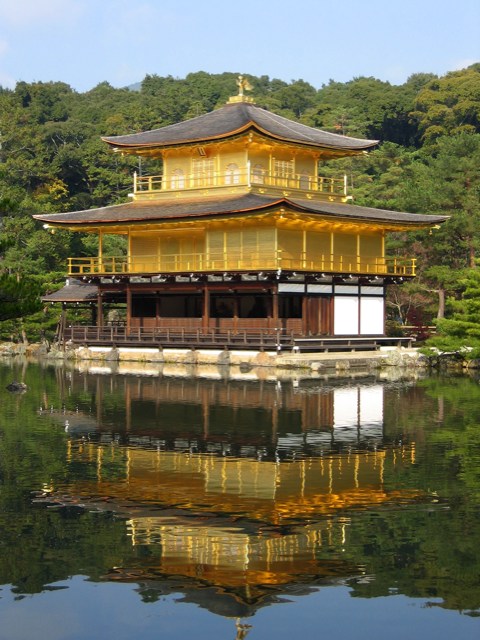The Japan of today has many religious ideologies practiced in its borders. The main ones being the native Shintoism, Buddhism from across the sea and Christianity. Although there has been a rather large Christian influence in Japan, with some major holidays stemming from Christian roots, it was not always welcome in Japan. In the early 1600’s Japan banned Christianity and thousands of Japanese people were put to death for being Christian while Buddhism suffered much less harshly in Japan.
Taken from bestsingletravel. (Being inside it is so cool and there are some interesting things to see in the area around the statue.)
Buddhism had been in Japan for quite a long time by the time Christianity arrived. It was an ideology that was fairly easy to accept for the Japanese people. The nobles accepted Buddhist practices and many of them chose to follow it. Over time various Buddhist temples were raised in Japan and many people followed Buddhism. In fact one of the most famous places in Japan is a hollow statue of Buddha that you can actually go inside and see. It wasn’t until the time of Oda Nobunaga and Toyotomi Hideyoshi that Buddhism faced any real threats. These two great leaders of the Japanese Sengoku era were strong believers in Shintoism and did not want Buddhism to distract people from their Shinto beliefs. The result of this was a decline in Buddhist practices and temple building but now many Japanese consider themselves Buddhist. It’s quite common for Japanese people to Practice Shintoism in everyday life even if they consider themselves Buddhist. The most common time for Japanese people to practice Buddhist beliefs is funerals. Japanese people often have traditional Buddhist funerals and memorials.
 Kiyomizu Dera a Buddhist temple in Kyoto. Picture from khiart.com. (I highly suggest looking up pictures of this temple. Pictures aren't enough to truly capture how beautiful it is but they get close.)
Kiyomizu Dera a Buddhist temple in Kyoto. Picture from khiart.com. (I highly suggest looking up pictures of this temple. Pictures aren't enough to truly capture how beautiful it is but they get close.)Contrary to Christianity, Shinto and Buddhist beliefs and practices can co-exist as seen in Japan. Christian rules and beliefs are fairly strict in comparison and practitioners of Christian beliefs at the time seemed to have believed that all non-Christians would go to hell. However Buddhism and Shintoism have a very different take on this that allows people to practice both beliefs. Buddhism is all about finding inner peace and enlightenment which can be done without intruding on their Shinto beliefs. Some Buddhist and Shinto beliefs are very similar so to practice one isn’t disregarding the other.Their teachings are fairly peaceful making them pleasant to follow.
 Sensoji Shrine in Asakusa. Taken from dreamstime. (This place gets really busy but it is a really cool experience and there are tons of shops leading up to the shrine itself so you won't get bored.)
Sensoji Shrine in Asakusa. Taken from dreamstime. (This place gets really busy but it is a really cool experience and there are tons of shops leading up to the shrine itself so you won't get bored.)So by the time we reach the present day and age we see how these ideologies have been received in Japan. The Shinto beliefs originated in Japan and have been generally accepted, Christianity was not accepted very well since their ideologies clashed with the resident Shinto beliefs and Buddhism was well received most of the time. The 1600’s was a time where control was everything so any religion that wasn’t Shintoism suffered quite harshly but they still survived to this day in Japan. Christianity aside, Japan is a good example and perhaps one of the few examples of a place where two separate religions can practiced side by side without conflict by the same person.
 Picture of Kinkakuji in Kyoto. Taken from Stanford Encyclopedia of Philosophy. (Absolutely gorgeous. Definitely go see it if you get the chance. You're not allowed inside but the outside and the surrounding area is really breathtaking.)
Picture of Kinkakuji in Kyoto. Taken from Stanford Encyclopedia of Philosophy. (Absolutely gorgeous. Definitely go see it if you get the chance. You're not allowed inside but the outside and the surrounding area is really breathtaking.)(Fun Fact! Except for the Church I have been to all of the places seen in this post! Sadly I couldn't use my pictures because they are on my mother's computer.)
Information sources:
http://www.omf.org/omf/japan/about_japan/christianity_in_japan
http://www.japan-guide.com/e/e2298.html
http://www.japan-guide.com/e/e2055.html



